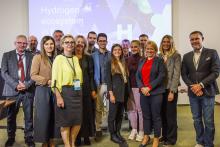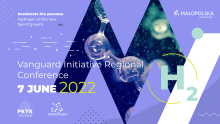Presentation of the Region
Małopolska is one of 16 regions in Poland, strategically located in the southern part of the country, bordering with Slovakia and nearly with Czechia. It is adjacent to European horizontal route E40, which efficiently connects its capital – Kraków, to the highly industrialised Upper Silesia Region (40 minutes), Germany (210 minutes) and Ukraine (160 minutes). It covers an area of over 15k. square kilometres and is populated by over 3,4m. people of which 800k. inhabit Kraków.
The Region has 8% share in the Polish GDP (preliminary estimates of gross domestic product in 2023). Per capita, it results in €19,3k (89 % of country mean). The average gross salary in the corporate sector is €2,2k, in Krakow €2,6k. (as of December 2024). The unemployment rate sits at 4,2% (as of December 2024). Annual export volume regularly (as for 2023) €15,8 b (as of 2023), with a positive trade balance. Małopolska is also a higher education hub with almost 150k. students - 11,9% of country total (as of 2023/2024).
Małopolska is the most frequently visited region in Poland with 20,8m. domestic and foreign tourists annually (as of 2023). Krakow airport is the second busiest in Poland with over 11m.passengers annually (as of 2024). Apart from Krakow, regional biggest social and tourist joints are Tarnów, Nowy Sącz, Wieliczka (world famous, historical salt mine on the UNESCO list of World Heritage Sites), Auschwitz-Birkenau - former German Nazi concentration and extermination camp, Zakopane (very popular ski and mountain resort).
RIS3 Priorities
Małopolska’s smart specializations (domains) cover ¼ of the total employment in the Region. Between 2013 and 2019 the number of people employed in RIS3 sectors grew by 39%, compared to a growth of 15% in the total number of people employed in the Region. Over 2015-2019 on average every fifth registered new business entities' operating profile was aligned with the RIS3. 3,6 percentage points – was the increase (2013-2020) in the total number of citations attained by regional researchers connected with smart specialisation.
In RIS3 opportunities, barriers and needs have been diagnosed and analysed in the prospect of global value chains which helps incorporate regional domains into the wider technological, scientific and industrial streams. Moreover, the new generation of our RIS3 document (2030 frame) demands increased activity of RIS3 stakeholders and their higher autonomy in shaping the domains’ content.
Małopolska offers two dimensional understanding of its RIS3 priorities, thus the proposed intervention is double-tracked. There’s a subjective, problem-oriented attitude that is applied toward the domains:
• Life Science;
• Sustainable energy;
• Creative and leisure ind.,
and a horizontal approach, applied within:
• ICT;
• Electrical engineering and machinery ind.;
• Production of metals, metal products and non-metallic mineral products;
• Chemistry.
Entrepreneurial Discovery Process
An important element of supporting innovation in the region are activities undertaken as part of the Entrepreneurial Discovery Process. Based on the ongoing animation, networking and testing activities since 2020, four Małopolska Specialization Platforms were launched in 2025:
1. Healthy society
2. Sustainable energy and industry
3. Accessible services and living comfort
4. Advanced materials, processes, devices
The Platforms cover all smart specializations to create ecosystems open to mutual cooperation. They were conceived based on the division at the level of fields of individual smart specializations which means that fields included in different smart specializations can be eventually found in one Platform. A vital aspect of the functioning of the Platforms is their continuity of operation in the years 2025-2027 and then 2027-2029. It should lead to the development of stable and well-integrated stakeholder environments. Within these environments, proposals for innovative projects will be created as well as all strategic and planning documents Important from the perspective of the content of regional RIS3.














